Bansan – a fresh take on board games and its relevance today
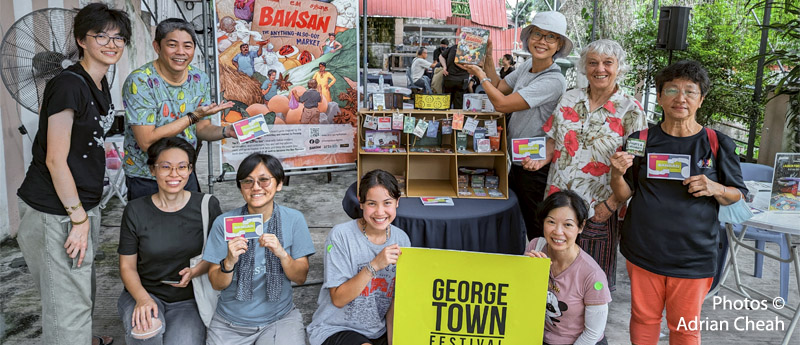
Board games have a long and fascinating history, dating back thousands of years to ancient civilisations such as Mesopotamia and Egypt. According to the British Museum (britishmuseum.org), the Royal Game of Ur is the oldest playable board game in the world, originating around 4,600 years ago in ancient Mesopotamia. Although they were once reserved for the elite, over time, board games evolved and spread across different cultures, becoming more accessible and popular among people from all walks of life.
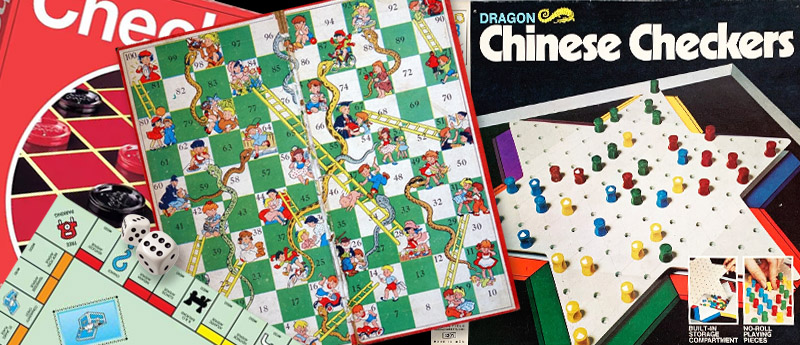
Growing up in the 1970s, Snakes and Ladders was among my favourites, along with Ludo, Checkers, Chinese Checkers and Monopoly. The Times of India reported in an article in 2008, "The board game, today called Snakes and Ladders, originated in ancient India, where it was known with the name Mokshapat or Moksha Patamu. It's not exactly known when or who invented it, though it's believed the game was played as early as the 2nd century BC." The game was used as a tool for teaching moral and spiritual lessons to children. The ladders represented virtues or good deeds that could elevate a person closer to enlightenment while the snakes represented vices or bad deeds that would lead a person down a path of spiritual regression.

Fast forward to 2023, digital entertainment and screen time have now taken centre stage in the lives of many, especially the younger generation. In a world dominated by video games, social media and smartphones, one might wonder if traditional board games still hold relevance. However, Bansan, a new board game launched in Penang on 15 July 2023, challenges this notion by combining the charm of a classic board game with a vibrant, multi-sensory experience inspired by Malaysian local markets.
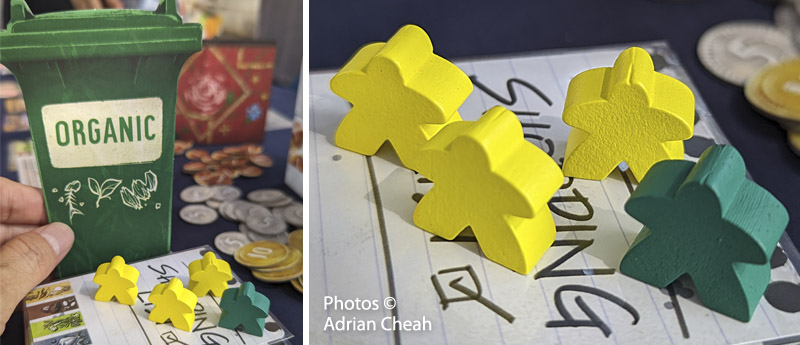
In the landscape of board games available today, Bansan stands out as a unique and refreshing addition. "Bansan" Penang Hokkien for "local wet market," transforms players into market vendors who juggle multiple roles – dealing with wholesalers and customers, buying and selling ingredients, cooking and serving local dishes and even managing waste. The flexibility of the game allows players to negotiate, haggle and plot to win. The Event cards add chaos and excitement to the board game as festivals, government policies and other events come into play. The vendor who generates the most money at the end of the game wins.
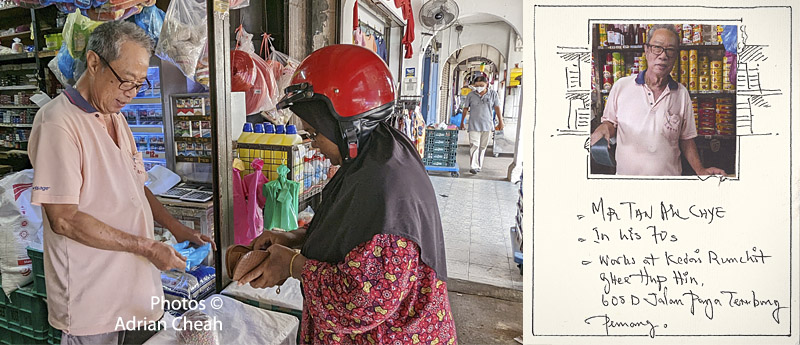
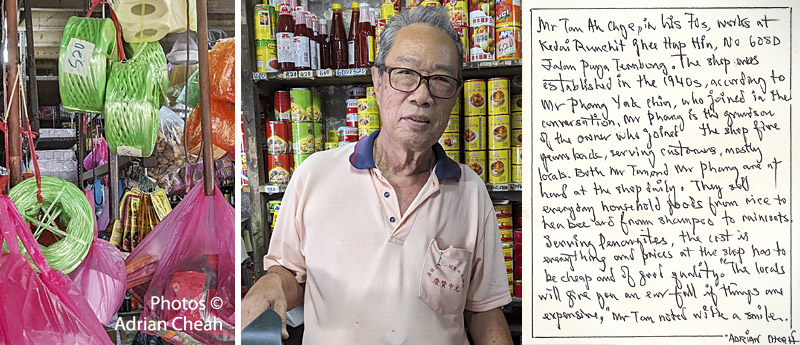
On 18 July 2023, I attended the George Town Festival's "Bansan: Rasa-Rasa Pasar Experiential Programme" at the Ayer Itam market. The three-hour programme included a group playing session, as well as an opportunity to interview a market vendor to create a story card about him/her and a customer to create his/her very own Bansan recipe card.

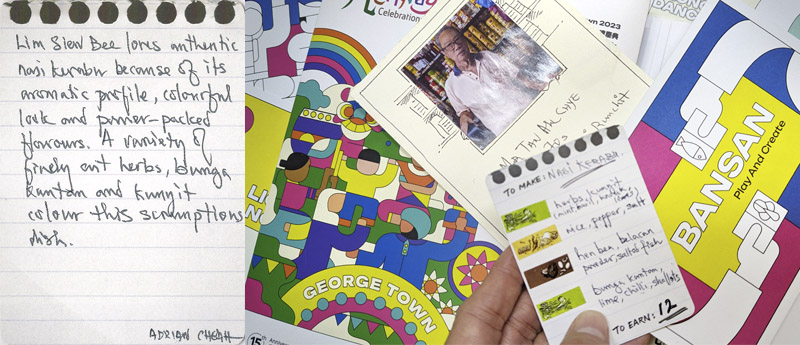
I had the chance to talk to Mr Tan Ah Chye from Kedai Runchit Gee Hup Hin, who runs the sundry shop selling household goods. I also spoke to Ms Lim Siew Bee and learned how to make Nasi Ulam, one of her favourite dishes to prepare at home.
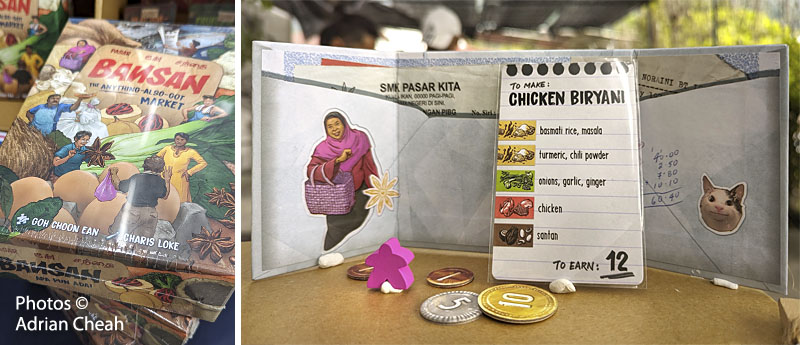
The designer of Bansan, Ms Goh Choon Ean was at hand explaining the rules and how the game was played. Spending time with Choon Ean, I discovered that she also created the Kaki Lima board game, launched in 2019. Arts and culture groups Arts-ED and LUMA are behind the production of Kaki Lima and Bansan. I am indeed very proud of these creative Malaysians. Bansan could be the only board game in the world with a Hokkien name!
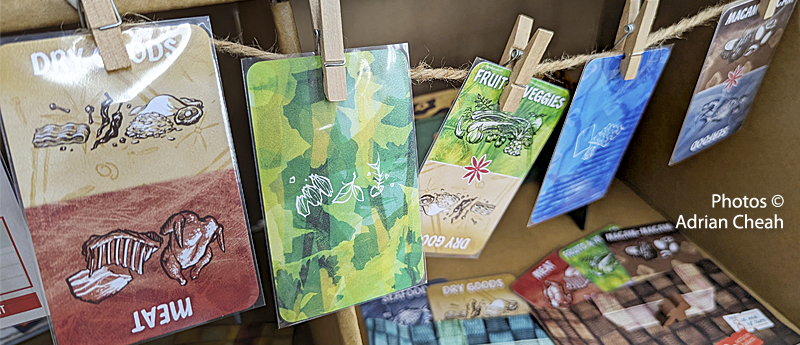
While there may be other board games being played, Bansan's dedication to capturing the essence of a Malaysian wet market sets it apart. Artist Charis Loke combines digital illustration and printmaking in Bansan's vibrant illustrations. Using gel plate printing with lino ink, she recorded silhouettes and impressions of chicken wings, fish tails, and prawns, creating patterns and backgrounds on Produce and Stall cards. The Event cards adopt the look of old calendar pages and the player screens are designed as Wallets used by different market characters. I love the design and artwork of the board game as it is a visual and tactile feast that transports players into the heart of the wet market.
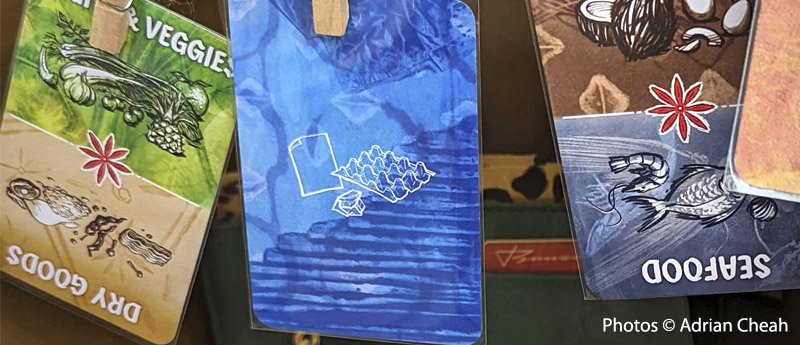
As for how Bansan will fare with the younger generation hooked on screen time, a challenge and an opportunity both exist. Many board games have hopped onto the bandwagon to create apps catering to smartphones and laptops. The allure of digital entertainment is undeniable, offering instant gratification and limitless possibilities. However, a board game like Bansan offers an invaluable chance for young players to engage with family and friends in a shared experience, fostering social bonds and real-time problem-solving skills. It reminds players of the joy of sitting around a table, engaging in face-to-face interactions and experiencing the thrill of competition in a physical setting. The tangible nature of this board game brings an element of unpredictability and physical engagement that inanimate screens simply cannot replicate.

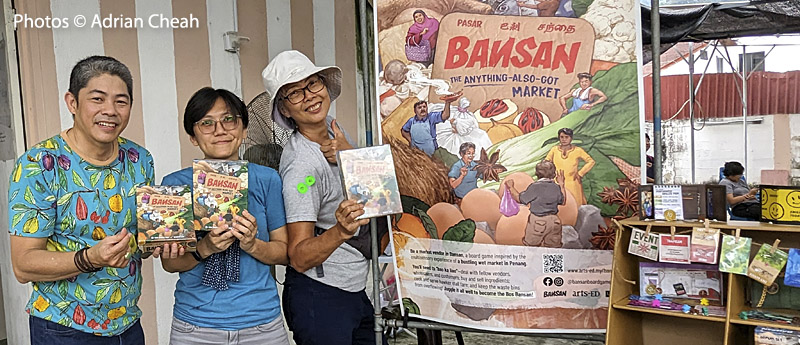
Bansan has an amazing mix of cultural representation, strategic gameplay and creative engagement that can draw in younger players looking for more meaningful and immersive experiences. As the digital world keeps on evolving, it is rather refreshing to see a board game like Bansan celebrating culture and heritage, acting as a bridge between generations and reminding us all of the sheer beauty and joy of coming together around a table to play. So in 2023 and beyond, Bansan is living proof that traditional board games still possess that special oomph that can capture the hearts of both the young and the old. It is just something truly special!
-------------------------------------
Written and photographed by Adrian Cheah
© All rights reserved
18 July 2023
-------------------------------------
About Bansan

For 2-5 players, aged 10 years old and above.
Gameplay duration from 30-50 mins.
The gameplay follows the flow of produce in a Malaysian wet market. You obtain goods from wholesalers to stock your stalls, buy produce to cook and sell local dishes, and manage the waste generated in the market from your activities. On your turn, you choose a number of actions in order to optimise how much income you can make. The vendor who generates the most money at the end of the game wins. Fellow vendors as well as 40 Malaysian-flavoured events and 54 recipes make a different game experience each time and can either help or disrupt your strategies of becoming the best Bos Bansan!
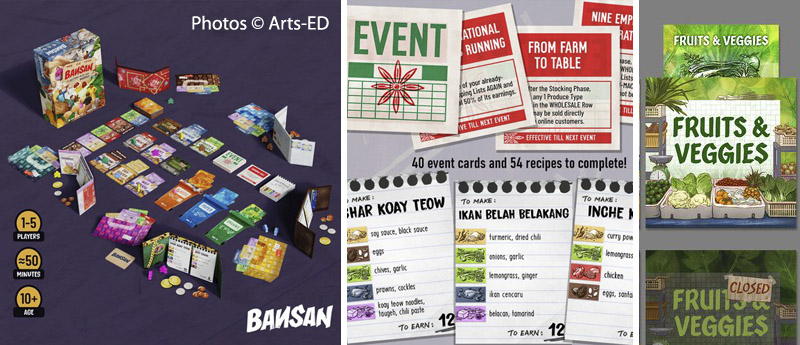
Bansan is now on its special launch price at RM 150 (from 15-31 July 2023)
Order within Malaysia direct from Arts-ED or place international orders with Kohii.
For more info on future play sessions and news on Bansan, go to https://www.arts-ed.my/bansan
Game design by Goh Choon Ean
with a solo mode by Evan Cheah
Art direction and illustration by Charis Loke
Production design by Law Hwa Siang
Content research by Ooi Win Wen and Chen Yoke Pin
Marketing and publicity by Stephanie Kee
Co-produced by Chen Yoke Pin and Goh Choon Ean